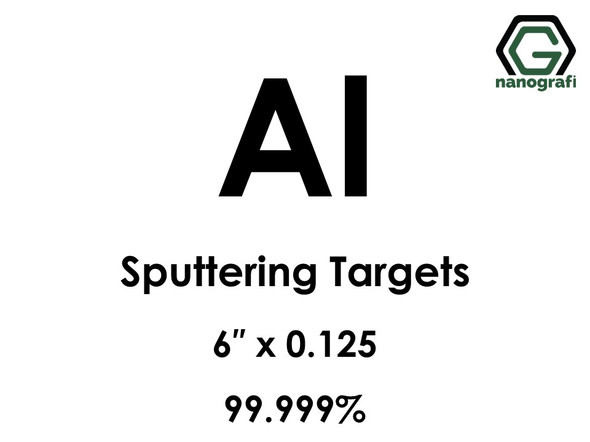Description
1 piece/570 €
Please contact us for quotes on larger quantities !!!
Boron Carbide (B4C) Sputtering Targets
Purity: 99.5%, Size: 6'', Thickness: 0.125''
Sputtering is a proven technology capable of depositing thin films from a wide variety of materials on to diverse substrate shapes and sizes.
The process with sputter targets is repeatable and can be scaled up from small research and development projects. The proses with sputter
targets can be adapted to the production batches involving medium to large substrate areas. The chemical reaction can occur on the target
surface, in-flight or on the substrate depending on the process parameters. The many parameters make sputter deposition a complex process
but allow experts a large degree of control over the growth and microstructure of the area.
Applications of Sputtering Targets;
- Sputtering targets is used for film deposition. The deposition made by sputter targets is a method of depositing thin films by sputtering
that involves eroding material from a "target" source onto a "substrate" such as a silicon wafer. - Semiconductor sputtering targets is used to etch the target. Sputter etching is chosen in cases where a high degree of etching anisotropy
is needed and selectivity is not a concern. - Sputter targets is also used for analysis by etching away the target material.
One of the example occurs in secondary ion spectroscopy (SIMS), where the target sample is sputtered at a constant rate. As the target is sputtered,
the concentration and identity of sputtered atoms are measured using mass spectrometry. By helping of the sputtering target, the composition of the
target material can be determined and even extremely low concentrations of impurities are detected.
Sputtering target has also application area in space. Sputtering is one of the forms of space weathering, a process that changes the physical and
chemical properties of airless bodies, such as asteroids and the Moon.
Boron nitride is a heat and chemically resistant refractory compound of boron and nitrogen with the chemical formula BN. It exists in various crystalline
forms that are isoelectronic to a similarly structured carbon lattice. The hexagonal form corresponding to graphite is the most stable and soft among BN
polymorphs, and is therefore used as a lubricant and an additive to cosmetic products. The cubic structure variety analogous to diamond is called c-BN;
it is softer than diamond, but its thermal and chemical stability is superior. Because of excellent thermal and chemical stability, boron nitride ceramics are
traditionally used as parts of high-temperature equipment.
Cubic boron nitride (c-BN) has been utilized as a significant coating material for cutting tool applications in recent years due to its excellent mechanical and
chemical properties. The most important outstanding properties of boron nitride can be counted as high hardness, low friction coefficient, good thermal
conductivity, high electrical resistivity, high wear resistance and chemical inertness at high temperatures. Boron nitride is the hardest material after diamond.
Furthermore, boron nitride is also superior to diamond due to its chemical stability against oxygen and ferrous materials at high temperatures.
Boron nitride mostly found in two polymorphs in the coatings; hexagonal boron nitride (h-BN) and cubic boron nitride (c-BN). Hexagonal boron nitride is
well-known as a soft, low friction coefficient, lubricating at both low and high temperatures, electrically insulating and thermally conductive material. It has
wide applications as a solid lubricant in metal forming dies and metal forming processes at high temperatures in any environment. In contrast to hexagonal
phase, cubic phase exhibits high hardness and other extreme properties stated above which puts forward c-BN as a suitable coating material for cutting tools.
Owing to these properties, use of cubic boron nitride in cutting tool applications such as dry cutting, high speed machining and cutting of hard materials, is
increased within the last years. Sintered cubic boron nitride cutting tools have already been used extensively in the market today. Major drawbacks of sintered
c-BN cutting tools are their high cost, poor ductility and difficulty of forming them into various cutting tool shapes. Therefore, demand to thin or thick film
deposition of BN not only for cutting purposes but also as a protective coating, optical coatings and electrical insulating layers has grown up rapidly and many
researchers attempt to synthesize boron nitride coatings in cubic phase. Among the coating methods, sputtering technique − a physical vapor deposition (PVD)
process − comes into prominence because of lower coating temperature, possibility to deposit thinner coatings and possibility to deposit sharp edges and complex forms.







